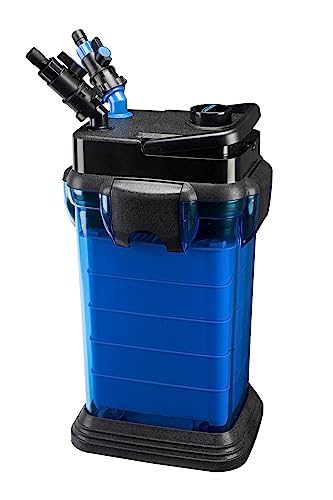The King Kong Cichlid is one of the gentlest cichlids. They’re artificial fish that look a lot like Flowerhorn cichlids. They may reach 12 inches and a width of 8 inches. They are available in many hues, such as red, orange, yellow, and pink. Some of the best fish to maintain in a giant Cichlid-only aquarium are the King Kong Parrot Cichlids. These species have a variety of characteristics and quickly become the focal point of your tank. If you plan on keeping this fish as your pet, read on to learn more about this fish.
Table of Contents
King Kong Parrot Cichlid Facts
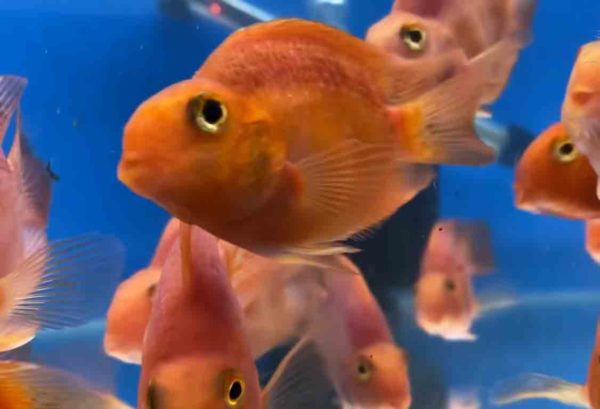
The King Kong Parrot Cihcldis is an artificial hybrid fish not observed in nature. In 1986, Parrot Cichlids were created in Taiwan by crossing several varieties of South American Cichlids. There were various competing theories about why cichlids were being used to produce king kong parrots. Gold serums, red devils, redheads, and Midas cichlids are the most prevalent suggestions. Citrinellum’sports,’ according to Taiwanese fishkeeper Xi Eng, who is recognized for pioneering the commercial breeding of king kong parrots. Midas Cichlids, RedHead Cichlids, and Red Devil Cichlids were repeatedly crossed to develop a new Cichlid species. The King Kong Parrot was named after this fish. It had a big body and possessed characteristics of all three cichlids. It was first introduced to fish keeping in the early 2000s. It quickly became so popular that many additional breeding facilities were required to meet client demand.
On the other side, it inspired the moral fishkeeping movement, with campaigners scoffing at the idea of purposely breeding defective fish for the sake of aesthetics.
On the other hand, these fish survive far longer than several bulldogs produced for their disfigured, crushed faces!
King Kong Parrot Cichlid Appearance
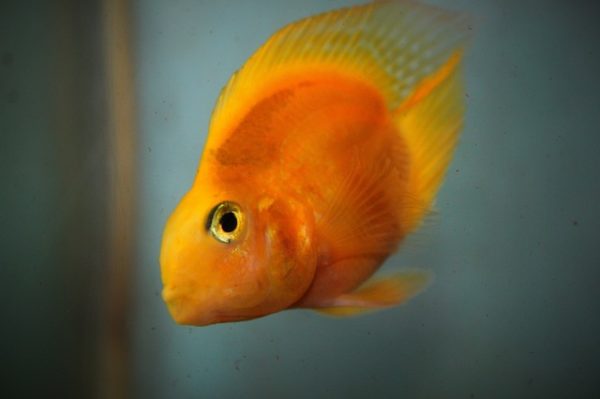
The King Kong Parrots are amongst the most gorgeous Cichlids. They are not the same as regular Blood Parrot Cichlids. They have a lot in common with Midas Cichlids and Redhead Cichlids. This fish’s hue ranges from dark red to pale pink. The King Kong Parrot has a large and broad body. Their jaws are fully functioning and shut entirely, unlike typical Parrot Cichlids. They have a spherical body form, a beak-shaped snout, and little triangle-shaped lips that are upside-down. Another noticeable malformation is the lip, which has a tiny vertical hole. The fish’s lower jaw may not move at all at times. That’s not a flaw in the traditional sense. It is merely an additional oddity. They have bowed spines. It makes swimming difficult for them. These fish, like other cichlids, have only one pair of nostrils on each side. They also have a very well-developed pair of pharyngeal teeth. This is in addition to a set of conventional teeth in their throat. At the same time, the spiky rays on the extremities of their anal, pelvic, pectoral, and dorsal fins defend them from attackers. The front sections of these fins are soft to allow for effortless mobility in the water. Nuchal Hump or Kok is the most common growth pattern in male King Kong Parrots. These are some of the biggest cichlids, reaching up to 12 inches in length.
A Red Mammon can easily be fooled for a bright red King Kong Parrot with a Nuchal Hump. As a result, most vendors offer the King Kong Parrot as Red Mammon to make quick profits.
King Kong Parrot Cichlid Lifespan
Compared to other fish, the King Kong Parrot has an extremely long lifespan. Almost all of your other pet fish may outlast your King Kong Parrot. Your King Kong Parrot may live up to 12 years if you properly care for it, provide it adequate area to swim in and feed it a nutritious diet. These species, unlike other fish, grow to enormous sizes while simultaneously growing slowly. If you properly care for your fish, your King Kong Parrot Cichlids will most likely survive for more than ten years in your tank.
King Kong Parrot Cichlid Availability
Both online and offline, King Kong parrots are common. They are often cultivated in East Asian nations such as Thailand, Bangkok, and Thailand. As a result, there’s a strong chance your fish will have gone long distances while returning home. The disadvantage of this trip is that they are likely to become badly exhausted or hurt. As a result, make careful to look for any signs of trauma or unusual malformations. We recommend contacting your local and trusted fish breeders before buying them for your tank.
King Kong Parrot Cichlid Size
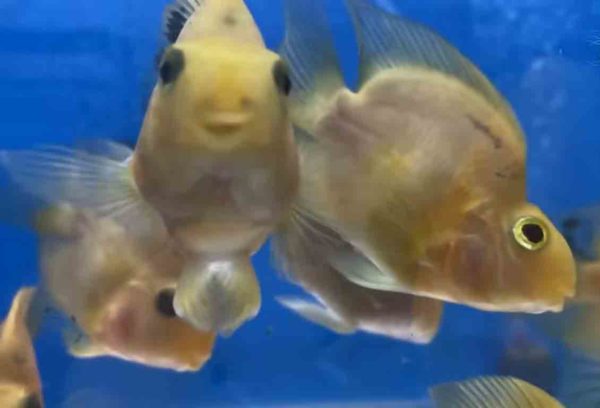
On average, King Kong parrots grow 8-9 inches long. They may grow up to 12 inches in captivity with the right food and care. 3.25-3.5 inches is the most popular selling size. They grow slowly and hence reach maturity slowly. However, they do get to a pretty significant size once they mature.
King Kong Parrot Cichlid Tank Mates
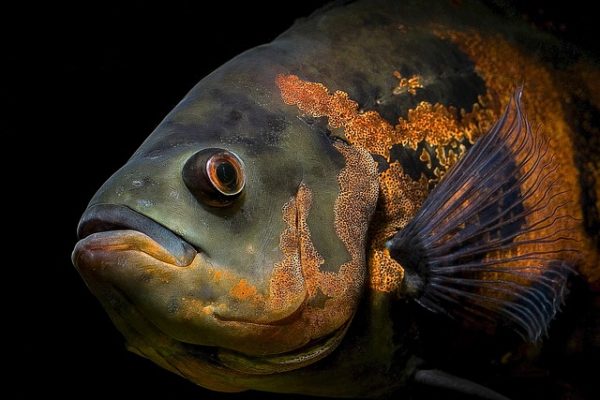
When young, the King Kong Parrot is cautious and skittish, but as it matures, it becomes semi-aggressive. They are not aggressive and get along nicely with other cichlids of comparable size. However, because each fish has a unique personality, some could be violent towards the other fish. However, most of them are peaceful, and they will not start fights in your tank unless you give them a large tank. Cichlids from South America get along swimmingly with King Kong Parrots. You must help ensure that all of the fish you maintain with the King Kong Parrot Cichlids are the same size. Oscar Cichlids, Vieja Cichlids, Red Mammon’s, Red Devil Cichlids, Severums, and other similar fish are excellent tankmates for the King Kong Parrot. You may also maintain a communal tank of King Kong Parrots all to yourself. The suitable tank mates for the King Kong Parrots are as follows:
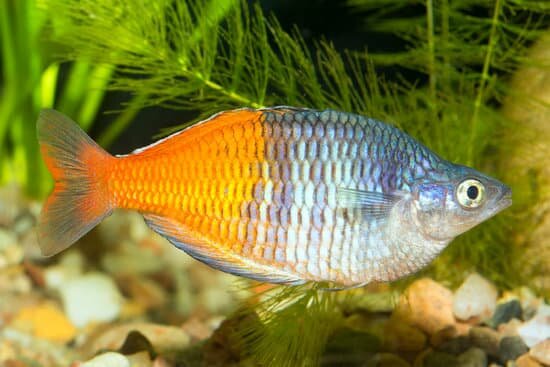
- Red Mammon
- Kribs
- Firemouths
- Yoyo loaches
- Rainbowfish
- Acaras
- Bala sharks
- Plecos
- Angelfish
- Barbs
- Severums
- Oscars
- Corydoras
- Glass catfish
- Kuhli loaches
- Silver dollars
- Swordtails
- Vieja cichlids
King Kong Parrot Cichlid Diet
The King Kong Parrot Cichlids are largely Omnivorous fish. You may give them practically any commercially available fish food. This fish will eat flake foods, pellets, frozen worms, bloodworms, and similar meals. These fish prefer live meals and foods with nutritional benefits. As a primary feed, you must use a decent staple meal and supplement with live foods such as bloodworms and frozen worms as a primary feed. To improve the vibrant colors of your fish, utilize fish pellets with high protein content. You can also use Spirulina and carotene. Hikari Carnivore, OF BP-G1, Akiko Super Red, XO Ever Red, Grand Sumo Red, and other diets are recommended for King Kong Parrot Cichlids. You should use live fish food such as brine shrimps, bloodworms, and other live foods with these pellet foods to help your fish develop quickly. You should only feed your King Kong Parrot sufficient food they can ingest in three minutes. Small meals throughout the day, rather than one large meal, are suggested to help reduce hostility. Animal protein, such as beef heart, should be avoided at all costs. Guppies and goldfish, which are live feeder fish, should do. Animal protein has a far greater melting point than human protein. It will take time to melt inside a fish’s body. This will result in a significant amount of fat deposition in the liver. Any leftover food should be removed from the tank. Your tanks’ water quality will suffer due to the leftover food.
The list of foods that you can give your King Kong Parrots are as follows:
- Frozen worms
- Blanched vegetables
- Ocean plankton
- Freeze-dried tubifex
- Flakes
- Pellets
- Small crustaceans
- Small feeder fish
- Baby brine shrimp
- Bloodworms
Water parameters for King Kong Parrots
If you do periodic water changes and tank care, you can simply maintain the water quality in your tank. Large fish like this create a lot of waste. Hence, your tank filter should be of excellent quality and offer appropriate filtration. A 30 percent water replacement every week or a 15 percent water replacement every four days is recommended. Once every 15 days, you must also clean the tank filter. If you can do them regularly, the water quality in your aquarium will be consistent and ideal for your fish. A magnetic cleaner may be used to remove algae from your glass.
Water Temperature
The water temperature in your aquarium should be between 76 and 84 degrees Fahrenheit. King Kong Parrot Cichlids enjoy warmer water. For your fish to grow appropriately, set the water temperature in your aquarium to around 84°F. Your fish will have a healthy metabolism and immune system if the temperature is steady and stable. Regardless of the season, you should always keep an aquarium heater running in your tank. Changes in water temperature that occur suddenly might stress the fish.
Water Filteration
Because King Kong Parrots is among the biggest Cichlids. They generate a significant amount of biowaste and debris compared to lesser fish. To keep the water clean in your tank containing the King Kong Parrots, you’ll need a heavy-duty aquarium filter. Smaller filters, such as sponge filters and corner filters, cannot clean the water in a giant aquarium and should not be used. Canister filters, Powerhead filters, or a sump filter are good options. Your tank will benefit from canister filters. It offers strong filtration and a reasonable flow rate, all of which are critical for a healthy King Kong Parrot.
Water pH level
The King Kong Parrot should be kept in somewhat plain water. The water must have a pH of 7.0 to 8.5. The pH of the water should ideally be around 7.5. The King Kong Parrots like softer water. Hence, you should use several types of water conditioners to make the water acceptable for your fish if the water in your tank differs from what the fish demands.
Top Equipment For King Kong Parrot
A sponge filter or corner filter will not suffice since king kong parrots are messy eaters that create a lot of bioloads. You’ll have to invest in a high-performance canister filter alternatively. They also don’t respond well to unexpected temperature fluctuations. As a result, you’ll need to invest in a dependable and safe heater that maintains a constant temperature and eliminates the chance of electrocution. Here’s a list of equipment for king kong parrots that we’ve painstakingly studied and hand-picked:
1. Penn-Plax Cascade Canister Filter
Pros:
- Has Hose clamps in the manner of a swimming pool
- Has Stackable filter media with a large capacity
- Has Filter material is supplied to allow for easy 360-degree rotation of flow valves.
You can buy this filter here!
2. Hygger 800W Submersible Aquarium Heater
Pros:
- Has a 3-digit digital display with 0.1°F accuracy.
- Has temperature probes on both sides
- Has ABS material is used for the outside shell.
- It has a thermostat with intelligence.
You can buy this aquarium heater here!
3. Penn-Plax Krusty Krab Aquarium Ornament
- Is made out of resin that is both safe and long-lasting
- Cleaning it is very easy.
- It has an attractive appeal.
You can buy this ornament here!
Breeding King Kong Parrot Cichlids
In your tank, you will not be able to breed King Kong Parrot Cichlids. Hybridization has rendered almost 99 percent of male Parrot Cichlids infertile. Breeders keep the remaining 1% of viable male Parrot cichlids. They subsequently sell for a high price. It’s pretty unlikely that you’ll find a fertile male King Kong Parrot. Female Parrot Cichlids, on the other hand, are nearly all fertile. They start laying eggs at the age of two and can lay an egg for up to ten years. Female Parrot cichlids may mate with practically any South American Cichlid because all male Parrot cichlids are infertile.
If you plan to reproduce Parrot Cichlids in your aquarium, you’ll need to either spend lots of money on a viable male or crossbreed the female fish with the other cichlids. Flowerhorn Cichlids, Convict Cichlids, Green Texas Red Devil Cichlids, and Red Head Cichlids are all-male fish that may readily mate with Parrot Cichlids.
It’s relatively simple to breed King Kong Parrots if you can get your hands on a fertile couple. The female fish will place her eggs on a smooth surface, fertilizing the male fish. The fertile eggs hatch in around 2-3 days, while the parents devour the unfertilized eggs.
Once the eggs have been placed in your aquarium, we recommend doing a daily 20 percent water. This would ensure that none of the fish eggs will spoil.
King Kong Parrot Diseases
Black Spot Disease
Diplopstomiasis, often known as Black Spot Illness, is a fish disease most commonly observed in Parrot Cichlids. It attacks the fish as a result of poor water conditions. It makes the fish more susceptible to illness. Many black patches occur on the King Kong Parrot’s skin in various locations. These worms will stress out your parrot cichlid and may kill it if not addressed promptly. The larva of a flatworm causes Black Spot Disease. Maintaining clean aquarium water is an easy way to treat Black Spot illness. If the condition of your fish does not improve, you can use the salt bath approach to cure it.
White Spot Disease
In the King Kong Parrot Fish, White Spot Condition, often known as ick, is prevalent. This sickness is caused by bad water quality and a decline in your fish’s immunity. White spot illness affects the majority of young King Kong Parrots. However, it affects only a small percentage of healthy adult King Kong Parrots. Your King Kong Parrot’s body will develop tiny white flake-like patches. If you don’t cure it immediately, the spots will get larger in diameter and increase in quantity, eventually totally covering the fish. It’s a simple sickness to treat. However, if you neglect it for too long, it’ll spread to other fish and could kill all of your aquarium’s inhabitants. You can raise the tank’s temperature, which aids in the elimination of the ick illness if your fish’s health is deteriorating.
Malachite Green, Methylene Blue, and Mepacrine Hydrochloride are examples of pharmaceuticals that can be used.
Swim Bladder Disease
Swim Bladder Disease is a disease that affects large fish. If your fish is swimming strangely or struggling to keep afloat, it most likely suffers from swim bladder illness. This sickness is pervasive in King Kong Parrots. A fully developed Parrot Cichlid is usually vulnerable to this sickness. It happens when your fish collides with anything, and its swim bladder is injured. In a fish, it is not the simplest sickness to treat. If necessary precautions are not followed, it might kill your fish right away. If your King Kong Parrot has Swim Bladder Disease, you must move the fish to a hospital tank right away. So that your fish can remain upright, the hospital tank should have lots of airflows and a low water level. You may give your fish boiling peas with the shells removed, which will benefit them a little bit. Swim Bladder Disease does not have a treatment. As a result, if the shock is too severe, your fish may perish.
Infertility
It’s not even close to being an illness. However, practically all-male parrotfish are sterile due to a genetic condition. This won’t be a problem unless you wish to breed your fish. However, there are currently several ways of making male parrot cichlids reproductive. To make male parrots fertile, people have been injecting them with various hormones. GnRH, LHRH, and gonadotropins are common hormones utilized in hormone-induced fish breeding. You can prevent these illnesses in your fish if the water in your aquarium is in good condition. However, it’s are relatively simple to treat if your fish becomes sick, and medications are readily accessible in your local fish store.
Ich
Ich is a parasitic illness that affects aquarium fish caused by the protozoan ichthyophthirius multifiliis. It generally happens in a filthy, under-oxygenated tank. It starts as tiny white spots that seem like salt grains all over the body. It is immediately followed by additional symptoms such as panting, hunger, and flashing. Ich is a very contagious disease. Worse, it may quickly spread from one fish to another without the need for a host. A copper-based therapy combined with an increased temperature is required to cure ich. Before applying the treatment, remember to remove the water conditioner.
Conclusion
Cichlids known as King Kong Parrots are large, colorful fish with a wide range of characteristics. This is the fish to choose if you want a vast, attractive-looking fish for your aquarium, this is the fish to choose. The King Kong Parrots are incredibly clever and can recognize their owner. Every time you feed your fish, it will communicate with you. If you enjoy maintaining Cichlids and want a giant, brightly colored fish, the King Kong Parrot is a great choice. It varies from typical parrots in size and makes a great wet companion for your tank.
No related posts.


